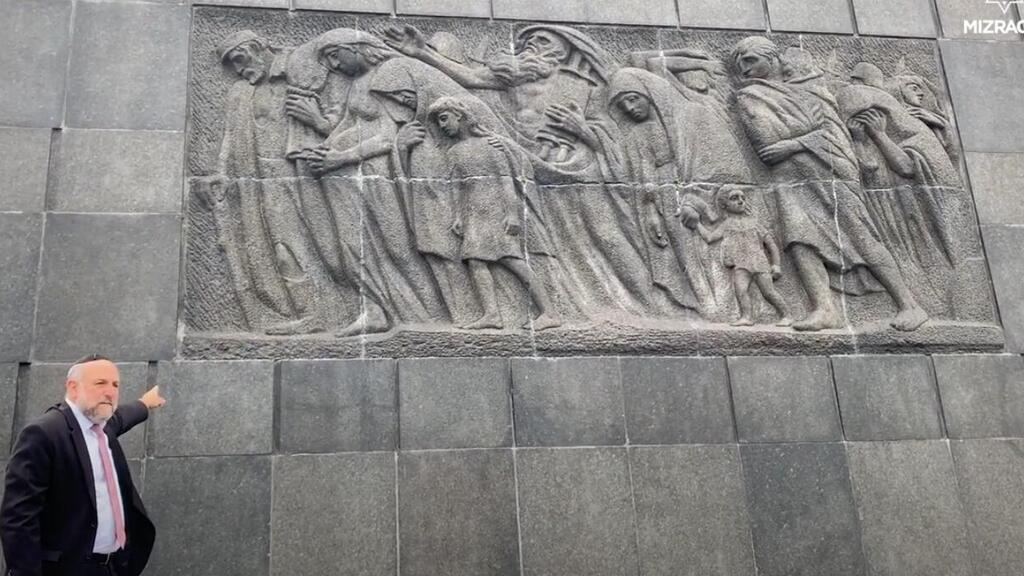Getting your Trinity Audio player ready...
The fast of Tisha B'av, which starts on Wednesday evening and lasts for 25 hours, marks the destruction of the holy Temples in Jerusalem - the First Temple was burned by the Babylonians in 423 BCE and the Second Temple was destroyed by the Romans in 69 CE. But it can be very difficult to conjure up feelings of sorrow over the destructions that took place so long ago.
More stories:
Ahead of Tisha B’av, World Mizrachi launched several videos titled “Kinot on Location.” (Kinot are special lamentation poems describing the tragedies that have befallen the Jewish people through time.) In the videos, representatives based in Israel and around the world provide explanations and insights into the customary prayers read on that day, directly from sites where specific tragedies have befallen the Jewish people over the ages.
1 View gallery


Chief Rabbi of Poland Michael Schudrich at the Monument to the Ghetto Heroes in Warsaw
(Photo: Screenshot 'Kinot on Location')
“It is well known that one of the greater challenges with the Tisha Ba’av service is being able to truly connect to the pain and mourning practices of the day when we live in a world where despite the absence of the Beit Hamikdash (Holy Temple), Jewish communities are thriving and growing,” says Rabbi Doron Perez, executive chairman of World Mizrachi. “The purpose of this series is to assist audiences to better appreciate the destruction via events and places that we can recognize, to personally appreciate that sense of loss.”
The sites chosen for the series span Jewish history, ranging from the locations of the Bar Kochba rebellion and the expulsion of Jews from Israel through to the Crusades, the Holocaust and the ongoing tragic losses from terror attacks in the twentieth century. The series, available on the group's website, features 18 different English films, including a selection in Spanish and French, with presenters including Rabbi Hanoch Teller, Rabbi Yosef Tzvi Rimon and Rabbanit Shani Taragin.
Prominent Jewish communal leader and historian Rabbi Dr. Jacob J. Schacter, provided the introduction to the series and explains that the very structure of the kinot is intended to address a basic misconception that underlies the concept of mourning on Tisha Ba’av.
“Tisha B’av is not really about mourning the destruction of the Beit Hamikdash. The real core mourning and these kinot is a sense of distance that this destruction caused between the people of Israel and our God. This is why we have all these other kinot describing other events throughout history because we need to work on making ourselves better and, in particular, to bring us closer to Hashem,” he said.
Perez added that “these messages are much more critical this year amid an increasing divisiveness in Israeli society and the Jewish world.”

